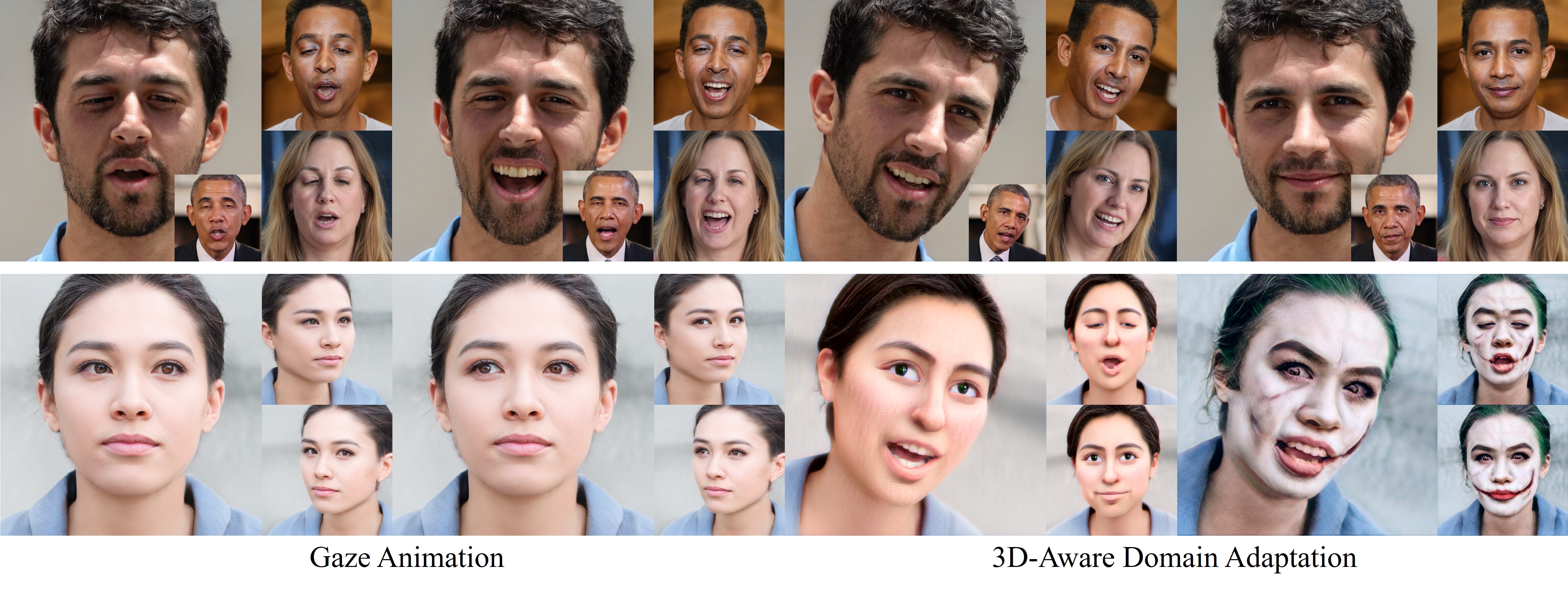The environment lives in <root_folder>/env. In order to add or remove from the environment use the following modification from <root_folder>
mamba <install|uninstall> -p ./envThe -p stands for prefix (or location). Change the ./env depending on the relative location.
A preview of all the available commands is present in playground/commands.md. I will keep on updating it as more functionality is added to the project.
The main functionality so far is:
- Saving the training data in
save_samples_next3d.py. - Generating the RGB from latents in
gen_sampled_next3d.py. - Training a diffusion model in
train_diffusion_eg3d_wplus.py.
The faceverse environment uses Jittor. Which does JIT compiling - we used CUDA 11.6.2. Download everything with mamba using the nvidia/proper_cuda_variant/ channel - cuda-nvcc, cudart-dev, cublas-dev, cunpp and a host of other files - check the env file. Then use the GCC version from the module load command, we used 11.1.0. And use nvcc_path = $(which nvcc) from an activated conda environment
bfm from https://github.com/jadewu/3D-Human-Face-Reconstruction-with-3DMM-face-model-from-RGB-image/blob/main/BFM/01_MorphableModel.mat
python demo_reconstruct.py -i /ibex/ai/home/parawr/Projects/diffusion/data/ffhq_512_posed_eg3d -s /ibex/ai/home/parawr/Projects/diffusion/data/ffhq_512_posed_eg3d/deca_results_unposed --saveObj 1 --saveKpt 1 --saveCoeff 1 --load_eye_pose 1 --eyepath /ibex/ai/home/parawr/Projects/diffusion/data/ffhq_512_posed_eg3d/gaze_results/param --rasterizer_type pytorch3d
For DECA, you have to replace this line from chumpy /home/parawr/Projects/Next3D/env/lib/python3.9/site-packages/chumpy/__init__.py
Currently most commands do not have proper configuration or logging. I am waiting to get to KAUST to setup wandb and SLURM, for a more reproducible pipeline. Until then, everything is hardcoded 🤷♂️.
There is a lot of functionality in notebooks/demo.ipynb. This includes sampling, guided diffusion. If you need help, I will help you guide through it, but it needs serious refactoring before it is useful to be released.
The env is not yet setup to perform the entire EG3D preprocessing or detection of landmarks for Next3D. This restricts us from using multiple identities.
WARNING
The environment to reproduce the whole preprocessing pipeline seems to be inconsistent. with different parts requiring different version of both PyTorch and Tensorflow. I am currently just setting up a different env for each step in dataset_preprocessing/ffhq/preprocess_in_the_wild.py
In order to preprocess an in the wild, run the standard EG3D pipeline and use the gaze estimation and the deep3drecon to get camera and gaze parameters respectively. In addtion, get the mesh using the DECA pipeline.
